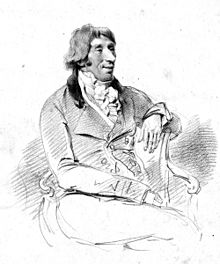Telemaco, ossia L'isola di Circe is an operatic dramma per musica in two acts by Christoph Willibald Gluck. The Italian libretto was written by Marco Coltellini after Carlo Sigismondo Capece's libretto for Scarlatti's 1718 opera Telemaco.

La buona figliuola, or La Cecchina, is an opera buffa in three acts by Niccolò Piccinni. The libretto, by Carlo Goldoni, is based on Samuel Richardson's novel Pamela; or, Virtue Rewarded. This was Piccinni's most successful Italian opera. There was a sequel entitled La buona figliuola maritata (1761) by the same composer and librettist. La buona figliuola supposta vedova by Gaetano Latilla followed in 1766.

Giulio Sabino is a dramma per musica in three acts by Giuseppe Sarti. The libretto was by Pietro Giovannini.

Medonte, re di Epiro is an opera seria in three acts by Giuseppe Sarti. The libretto was by Giovanni de Gamerra for Felice Alessandri's opera Medonte, re d'Epiro (1774) and was later set by several other composers.

Calliroe is an opera by Antonio Sacchini, set to a libretto by Mattia Verazi. It was first performed in Ludwigsburg on 11 February 1770 and the ballets were set by French choreographer Louis Dauvigny.

Creso ('Croesus') is an opera seria in 3 acts with music by Antonio Sacchini, set to an Italian libretto by Gioacchino Pizzi after Book I of the Histories by Herodotos. The opera was first performed on 4 November 1765 at the Teatro San Carlo in Naples. The libretto was a popular one that had been first set by Niccolò Jommelli.

Xerse (Xerxes) is an opera in three acts by Giovanni Bononcini. It was designated as a dramma per musica. The libretto was written by Silvio Stampiglia after that by Nicolò Minato which had been used for the 1654 opera of the same name by Francesco Cavalli. Stampiglia's version was in turn used as the basis for Handel's Serse.

Giuseppe Francesco Bianchi was an Italian opera composer. Born at Cremona, Lombardy, he studied with Pasquale Cafaro and Niccolò Jommelli, and worked mainly in London, Paris and in all the major Italian operatic centres of Venice, Naples, Rome, Milan, Turin, Florence.

I fuorusciti di Firenze is an opera semiseria in two acts by the Italian composer Ferdinando Paer. The libretto was by Angelo Anelli. The work is a form of 'rescue opera'.

Il Pompeo is a dramma per musica in three acts by composer Alessandro Scarlatti. Written in 1682 when Scarlatti was 22 years old, it was his fourth opera and first dramatic work on a serious and grand subject. The opera uses an Italian language libretto by Nicolò Minato which had previously been used by Francesco Cavalli for his 1666 opera Pompeo Magno. The work premiered at the Teatro di Palazzo Colonna in Rome on 25 January 1683.

Calto is an opera seria in three acts by Francesco Bianchi. The libretto was by Giuseppe Maria Foppa, after the 'celtic' poetry of Ossian. The opera was first performed at the Teatro San Benedetto in Venice on 23 January 1788.

Zemira is an opera seria in three acts by Francesco Bianchi. The libretto was by Gaetano Sertor.

La villanella rapita is an opera giocosa in two acts by Francesco Bianchi. The libretto was by Giovanni Bertati.

Castore e Polluce is an opera seria by Francesco Bianchi. The libretto was one translated by Carlo Innocenzo Frugoni, from Pierre-Joseph Bernard's French text for Rameau's Castor et Pollux.

Seleuco, re di Siria is an opera seria in three acts by Francesco Bianchi. The libretto was by Mattia Botturini, after Antioco by Apostolo Zeno and Pietro Pariati, a libretto first set by Francesco Gasparini in 1705.

La morte di Cesare is an opera seria in three acts by Francesco Bianchi. The libretto was by Gaetano Sertor, after Shakespeare's play Julius Caesar.

Alonso e Cora is an opera seria in three acts by Francesco Bianchi. The libretto was by Giuseppe Foppa, after Ferdinando Moretti's Idalide, o sia La vergine del sole, as used by Giuseppe Sarti in Milan in 1783. The original source of this text was in turn Jean François Marmontel's Les Incas, ou La destruction de l'empire du Pérou (1777).
Mattia Verazi was an Italian librettist primarily active at the court of Charles Theodore in Mannheim. He became known as the leader of a group of librettists who challenged the conventions of opera seria in the mid-18th century and was a long-time collaborator of composer Niccolò Jommelli. He also produced the libretti for Salieri's Europa riconosciuta, Sacchini's Calliroe, and J. C. Bach's Temistocle







